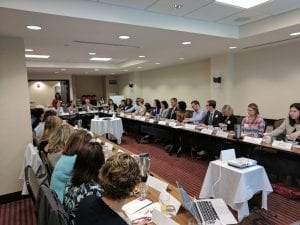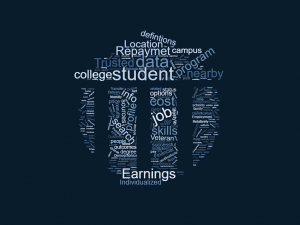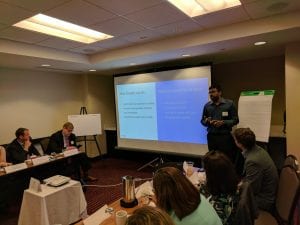What information do students need to make more informed decisions about college, like which institution to enroll at, what to study, and how to pay for it? What datasets collect, house, and disseminate that information, and where are the gaps? For information that is available, what are the most effective ways to design and deliver that info so students actually use it? Earlier this month, Young Invincibles convened a select group of technologists, state data stewards, advocates, and college access groups to brainstorm answers to these questions.
While we covered a lot of ground during the half-day, including some of the biggest challenges we face in opening up access to useful information to students, most participants were optimistic about our ability to improve college decision making. One of the main takeaways was the importance of diverse stakeholders working collaboratively to build tools. Postsecondary data experts know the numbers inside and out, but lack the expertise of user interface (UI) and user experience (UX) design of technologists and app developers. The convening was a unique opportunity for these essential actors to share their perspectives and ideas.

Convening of technologists, state data stewards, advocates, and college access groups, June 7, 2017.
The conversation emphasized how prospective students have vastly different informational needs. Students with parents who attended college have an immediate advantage, as their parents are more likely to be familiar with application and financial aid processes, while first-generation students might have fewer resources at their disposal. Without prior knowledge, the FAFSA (Free Application for Federal Student Aid) can be confusing. Moreover, for students who are first-in-family to attend school, more information and guidance on how to assess and pick a school could mean the difference between ending up at a school that supports them in finishing their degree or not completing.
Of course, students have more than one decision make. Ideas42, a research non-profit specializing in behavioral economics, mapped eight distinct questions students and families need to address, ranging from whether the student should event get a degree, how to finance it, to what to major in. So information that might apply to one decision, might be irrelevant for other decisions.
It’s also important to understand students’ motivations to go to college in the first place. While students pursue postsecondary education for all sorts of reasons, improved job opportunities and making more money dominates students’ priorities. So what kind of jobs and salaries students could expect from a given program or college would be important information to capture.
Employment outcomes of colleges and programs are also the trickiest metrics to capture. Congress actually banned the Department of Education from keeping track of what types of jobs individual students get after college, making it very difficult to deliver the information students want the most. Some forward-looking states and systems have stepped up to meet this challenge, and track where their students end up in the workforce and building consumer-facing tools to help students and families. We were fortunate enough to have two of those forward-looking systems, the University of Texas and the Colorado Department of Education, attend the convening and update the group on their projects.

Wordcloud of the answers attendees gave to two questions: what information do students need to make better decisions and how to deliver that information?
Of course even if we identified the right information, for the right decision, we’re left with a critical question – what’s the best way to deliver it? You can’t just post a spreadsheet and hope students find it and know how to use the information. To help outline some principles of information design and delivery, Young Invincibles published a review of studies and research on cognitive information processing, and offered some design principles for the Department of Education to design a search tool. For instance, it’s essential not to give the user to many choices at once; this risks a cognitive bottleneck, hindering the mind from recognizing, remembering, and using information in decisions.
But even if you build a great tool, users still need to find it. In Young invincibles’ testing of college search tools, we noticed that students primarily use online search engines to learn about colleges and even find college search tools. So to really improve college decision-making, search engines need to be a part of the conversation. The U.S. Department of Education’s College Scorecard recognized the importance of search engines too, when they partnered with Google to integrate Scorecard data into Google search results. Google’s education team also attended the event and shared what they’ve learned about how the syntax structure of queries could lead to better design of college information platforms.

Google Principal Engineer Sitaram Iyer presents his teams’ work
With more and more students going to college, and a college degree more crucial than ever to compete in today’s economy, there’s clearly a lot more work to do to connect students and families with tools to inform their college decisions. Over the next few months, Young Invincibles looks forward to building on last week’s conversation, and forging partnerships with search engines, tech companies, states, institutions, advocates, and other stakeholders dedicated to making college choices more informed and transparent.
